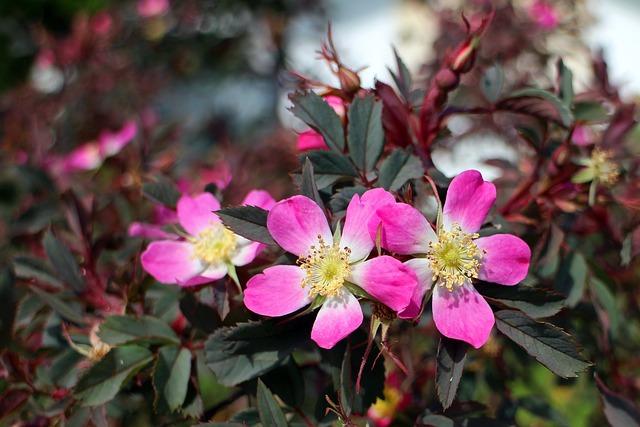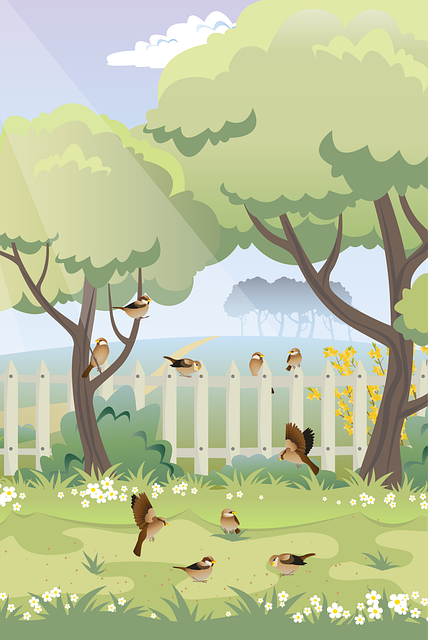Space-saving vertical gardens revolutionize urban spaces by merging architecture and nature on walls or fences, maximizing limited outdoor areas. Choosing sunny locations with easy access for maintenance is key. Design options include wall-mounted and freestanding structures, while plant selection focuses on compact succulents and trailing plants. Incorporating LED lighting and automation enhances aesthetics and practicality, making these gardens easier to manage and environmentally friendly solutions for urban settings.
Uncover the secrets of transforming your outdoor (or indoor) spaces with stylish and functional space-saving vertical gardens. This comprehensive guide explores innovative design options, from wall-mounted structures to freestanding systems, empowering you to create a vibrant green oasis without overwhelming your living area. Learn the art of plant selection and care, along with creative lighting and automation tips, making your vertical garden both aesthetically pleasing and thriving.
- Understanding Space-Saving Vertical Gardens: A Brief Overview
- Choosing the Right Location for Your Garden
- Design Options: From Wall-Mounted Structures to Freestanding Systems
- Plant Selection and Care for Optimal Growth
- Creative Ways to Incorporate Lighting and Automation
Understanding Space-Saving Vertical Gardens: A Brief Overview

Vertical gardens are an innovative and stylish way to bring greenery into urban spaces, offering a unique solution for those with limited outdoor areas. These space-saving vertical gardens transform walls, fences, or even plain concrete into vibrant oases, merging architecture and nature seamlessly. By growing plants upward, vertical gardening maximizes the use of available space, making it an ideal choice for apartments, balconies, or any urban setting where traditional landscaping is challenging.
This approach not only adds aesthetic appeal but also provides numerous functional benefits. Space-saving vertical gardens can improve air quality by absorbing pollutants and releasing oxygen, creating a healthier living environment. They offer a creative way to cultivate herbs, vegetables, or flowers right at home, promoting sustainable living practices. Additionally, their vertical nature reduces water usage compared to traditional horizontal gardening, making them environmentally friendly choices for modern, space-conscious individuals.
Choosing the Right Location for Your Garden

When considering a space-saving vertical garden, selecting the perfect location is paramount. The ideal spot offers ample sunlight, as most plants thrive in its presence. Windowsills, balcony railings, or any available wall space can be transformed into vibrant green oases with the right orientation towards the sun. If natural light is scarce indoors, LED grow lights can emulate sunlight, enabling a successful indoor vertical garden. Additionally, ensure the location provides easy accessibility for maintenance and watering. With these factors in mind, you’re well on your way to creating a beautiful and functional vertical garden that optimizes every inch of available space.
Design Options: From Wall-Mounted Structures to Freestanding Systems

In the realm of space-saving vertical gardens, design options are as diverse as they are innovative. Wall-mounted structures offer a sleek and elegant solution for smaller spaces, allowing plants to cascade down from above like a natural work of art. These setups can be tailored to fit various wall types and heights, making them perfect for both indoor and outdoor environments. Alternatively, freestanding systems provide a more independent approach, where individual modules or panels can be arranged in any configuration desired. This flexibility enables gardeners to create unique designs that cater to specific aesthetic preferences while still maximizing vertical real estate.
Whether you opt for wall-mounted or freestanding, each design offers distinct advantages. Wall-mounted structures conserve floor space, making them ideal for urban apartments or compact courtyards. Freestanding systems, on the other hand, can be easily rearranged and reconfigured over time, allowing for constant evolution in your garden’s look and feel. Both options contribute to creating vibrant, bustling landscapes that enhance any setting, ensuring a harmonious blend of style and functionality.
Plant Selection and Care for Optimal Growth

When designing a space-saving vertical garden, careful consideration of plant selection is key to ensuring optimal growth in limited space. Choose plants that thrive in vertical environments and have similar care requirements to simplify maintenance. Succulents and certain varieties of herbs are excellent options due to their compact size and low water needs. For greener foliage, select fast-growing, trailing plants like ivy or potted ferns that can cascade down the garden structure.
Regular watering is essential, but allow the soil to dry between waterings to prevent overwatering. Ensure proper drainage by using well-draining soil and pots with holes. Provide adequate sunlight exposure, either through natural light or artificial grow lights, as most plants require 4-6 hours of direct sunlight daily. With the right plant choices and care practices, your vertical garden will flourish, bringing nature indoors in an efficient and stylish manner.
Creative Ways to Incorporate Lighting and Automation

Incorporating lighting and automation into a space-saving vertical garden adds both aesthetic appeal and practicality. LED strip lights can be seamlessly integrated along the garden’s structure, illuminating each layer with soft, even glow, making it vibrant and inviting even during the evening. Smart sensors can automate watering systems, ensuring plants receive the perfect amount of hydration without excessive waste. This tech-driven approach not only simplifies maintenance but also enhances the overall ambiance, transforming your vertical garden into a captivating feature that complements any interior or exterior space.
Automation extends to nutrient delivery and climate control as well. Automated nutrient dispensers can regulate the flow of essential elements to plants, while smart thermostats and humidity sensors maintain optimal conditions for growth, ensuring each plant thrives in its vertical habitat. These innovative solutions not only make your garden easier to manage but also contribute to a more sustainable and efficient use of space.
Vertical gardens offer a stylish and innovative solution for maximizing limited outdoor spaces, combining aesthetic appeal with practical functionality. By understanding the key considerations outlined in this article—from choosing the right location and design options to plant selection and care, as well as incorporating lighting and automation—you can create a thriving space-saving vertical garden that enhances your living environment. Embrace these ideas and start transforming your outdoor area into a vibrant, green oasis.
